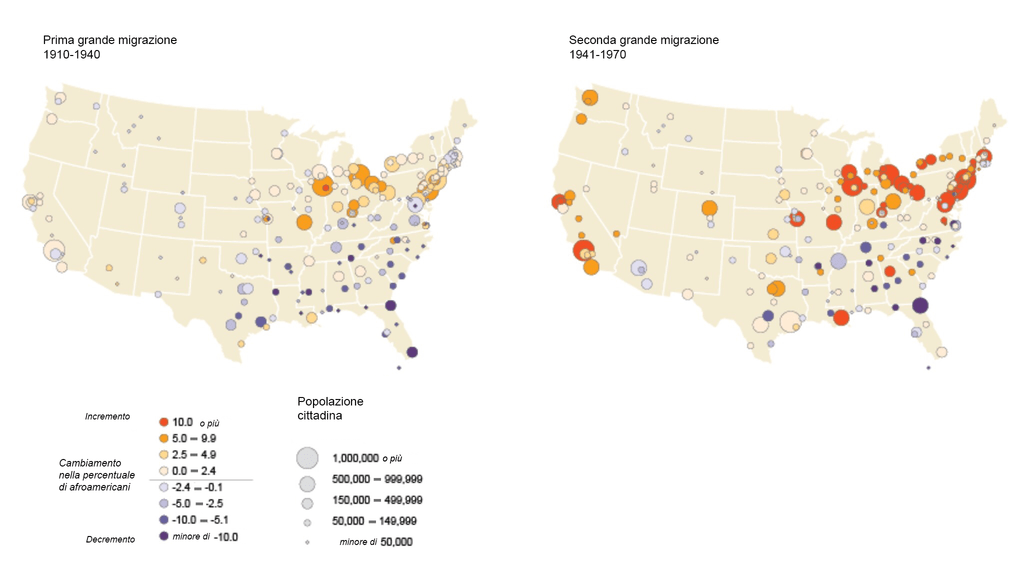What We Review
Introduction
The Great Migration was one of the most significant movements of people within the United States. Between the 1910s and the 1970s, around six million African Americans left their homes in the South and ventured to Northern and Western cities. Understanding this migration is crucial because it reshaped American cities, influenced Black culture, and affected the nation’s social and political dynamics. Therefore, studying the Great Migration helps illustrate how social, economic, and political factors can combine to drive large-scale cultural changes.
This guide will walk through what the Great Migration was, why it began, and how it changed American life. It is intended for high school students preparing for AP® African American Studies and seeking clear, step-by-step explanations.
What Was the Great Migration?
The Great Migration refers to the massive relocation of African Americans from Southern states to cities around the North, Midwest, and West. It began in the 1910s and continued into the 1970s. Over this period, about six million Black Southerners migrated in search of better jobs, safer communities, and more freedom.
Many families traveled on overcrowded trains or automobiles, sometimes with only a small suitcase or container holding their belongings. Although conditions were challenging, they took great risks because staying in the Jim Crow South often meant facing segregation, discrimination, and violence. Thus, the Great Migration is also a testament to the determination and resilience of African Americans seeking a better life.

Causes of the Great Migration
Economic Opportunities
During World War I and World War II, many Northern factories needed laborers to replace workers who had gone off to fight. Hence, companies began to recruit African Americans to fill these positions. In contrast, the South offered limited job choices, mostly in farming and domestic work. As a result, many African Americans decided that relocating was worth the risk to earn steady wages and escape cycles of poverty.
- North & South Economies Comparison:
- In the South, wages were often very low, and sharecropping kept many families tied to land they did not own.
- In the North, industries like steel mills, car manufacturers, and meatpacking plants offered higher pay.
Environmental Factors
Natural disasters and environmental threats also pushed African Americans out of the South. For instance, floods destroyed homes and ruined farmlands, making it hard to grow crops. Furthermore, the boll weevil infestation decimated cotton fields, wiping out one of the main sources of income for many Black families. Without reliable crops to harvest and sell, people saw no choice but to leave, hoping to rebuild their lives in places like Chicago, Pittsburgh, and New York City.
Safety and Freedom
Living under Jim Crow laws meant dealing with systemic racism and the constant threat of violence. Lynching and other forms of racial terror were rampant, creating great fear. Moreover, local authorities often did not protect African Americans. As a result, many Black families moved northward to escape ongoing threats and secure their freedom. Stories of entire communities fleeing under cover of night were not uncommon, and these personal experiences highlight how vital safety was as a motivating force.
Transportation and Communication
Railroads transformed long-distance travel, allowing large groups to leave quickly. At the same time, the Black press—newspapers like The Chicago Defender—spread information about jobs and housing in Northern cities. These papers also offered practical advice, such as the best train routes and ways to settle into new neighborhoods. Consequently, word of mouth and printed invitations inspired more African Americans to follow friends or relatives who had already migrated.
Impact of the Great Migration
Transformation of Communities
One of the most visible changes from the Great Migration was the shift from rural to urban living for many Black Southerners. Previously, African Americans lived primarily in agricultural areas, working on farms. However, upon moving to large cities, they adapted to factory work and service jobs. Housing was often cramped, and neighborhoods sometimes grew very quickly, forming vibrant hubs of Black culture and commerce.
- Life in rural areas focused on cultivating crops and raising livestock.
- In thriving cities like Detroit, the focus turned to working in automobile factories.
- Families learned new skills, developed new social networks, and formed neighborhoods that had their own identities and traditions.
Cultural Changes
The Great Migration brought Southern traditions, music, and storytelling to places like Harlem, Chicago, and Los Angeles. This infusion of talent and cultural heritage sparked new artistic movements, including the Harlem Renaissance. Writers such as Langston Hughes and musicians like Duke Ellington flourished, showcasing African American artistry to a national audience. Furthermore, the blending of Southern roots with Northern influences led to new forms of jazz, blues, and literature that enriched American culture as a whole.
Racial Tensions in the North
Not everyone welcomed the arrival of African Americans in Northern cities. Employers sometimes tried to stop Black laborers from leaving the South. In addition, some White workers feared competition for jobs. Consequently, there were urban riots and increased discrimination in housing. Although these difficulties added strain, they also led to a greater awareness of racial issues across the country, setting the stage for future civil rights activism.
The Role of the National Urban League
Founded in 1910, the National Urban League supported African Americans adjusting to city life during the Great Migration. The League provided help with finding jobs and housing, offering guidance about settling in urban areas. For example, in New York City, the Urban League helped first-time city dwellers identify safe neighborhoods and avoid scams. Over time, the organization also joined forces with other civil rights groups, such as A. Philip Randolph’s 1941 March on Washington and the Southern Christian Leadership Conference.
Conclusion
The Great Migration illustrates how powerful insights arise when examining the push-and-pull factors behind major demographic changes. The lure of better jobs, the need for safety, and the variety of transportation options all played roles in causing millions of African Americans to relocate. This journey transformed communities in both the North and the South, showing how a single movement can affect an entire nation’s economy, culture, and social fabric.
Today, conversations about migration in America continue. Thus, studying the Great Migration remains relevant for understanding present-day issues of race, community formation, and economic opportunity. Reflecting on the courage of those who left the South during this time reminds us of the resilience people possess when seeking better lives.
Required Sources
Anonymous Letter Beckoning African Americans to Leave the South (The Messenger, March 1920, in Call and Response)
This letter represents firsthand evidence of how African Americans were encouraged to seek better conditions outside the South. It also demonstrates how important written testimonials, as shared in newspapers and magazines, were in driving such a massive migration. The letter’s urging reflects deep dissatisfaction with living conditions under Jim Crow and highlights the power of persuasive communication in mobilizing communities.
The Migration Series by Jacob Lawrence (1940–1941)
Jacob Lawrence’s collection of paintings is a vivid visual record of the Great Migration. In particular, Panel No. 1 conveys the essence of leaving the South, with families shown preparing to depart. Lawrence’s work underscores the emotional weight and hope carried by migrants, while also capturing the massive scale of this historic journey. Additionally, the paintings helped bring national attention to the struggles and triumphs of African Americans during this time.
Great Migration Map
Contemporary maps showing major routes of the Great Migration reveal the widespread nature of this movement. These maps illustrate how African Americans journeyed from rural areas to key metropolises like New York, Chicago, and Los Angeles. They also demonstrate how improved rail networks and highways facilitated this transition. By examining routes on a Great Migration map, one can visualize the large distance many families traveled, gaining perspective on the courage and determination it took to embark on such journeys.
Understanding the Great Migration requires exploring written accounts, art, and geographical data. These sources come together to tell the story of people pursuing better lives, often in the face of tremendous difficulties. The Great Migration remains a defining chapter in American history, and it continues to shape discussions about race, opportunity, and community across the country.
Quick Reference Chart
| Vocabulary | Definition |
| Great Migration | Massive relocation of six million African Americans from the South to Northern cities (1910s–1970s). |
| Jim Crow South | Racial segregation laws in the Southern United States that enforced discrimination against African Americans. |
| National Urban League | An organization founded in 1910 that helped African Americans transition to urban life, find housing, and secure jobs. |
| Boll Weevil | An insect that destroyed cotton crops, prompting many farmers to seek better opportunities elsewhere. |
| Harlem Renaissance | A 1920s cultural movement in Harlem that celebrated African American art, music, and literature. |
Suggested Additional Resources
- “The Warmth of Other Suns” by Isabel Wilkerson – A detailed account of the journeys made by African Americans who left the South.
- “Eyes on the Prize” documentary series – Offers a historical look at the civil rights movement connected to mass migration.
- Chicago Defender archives – Historic Black newspaper that documented and encouraged the Great Migration.
Sharpen Your Skills for AP® African American Studies
Are you preparing for the AP® African American Studies test? We’ve got you covered! Try our review articles designed to help you confidently tackle real-world AP® African American Studies problems. You’ll find everything you need to succeed, from quick tips to detailed strategies. Start exploring now!
Need help preparing for your AP® African American Studies exam?
Albert has hundreds of AP® African American Studies practice questions, free response, and full-length practice tests to try out.









